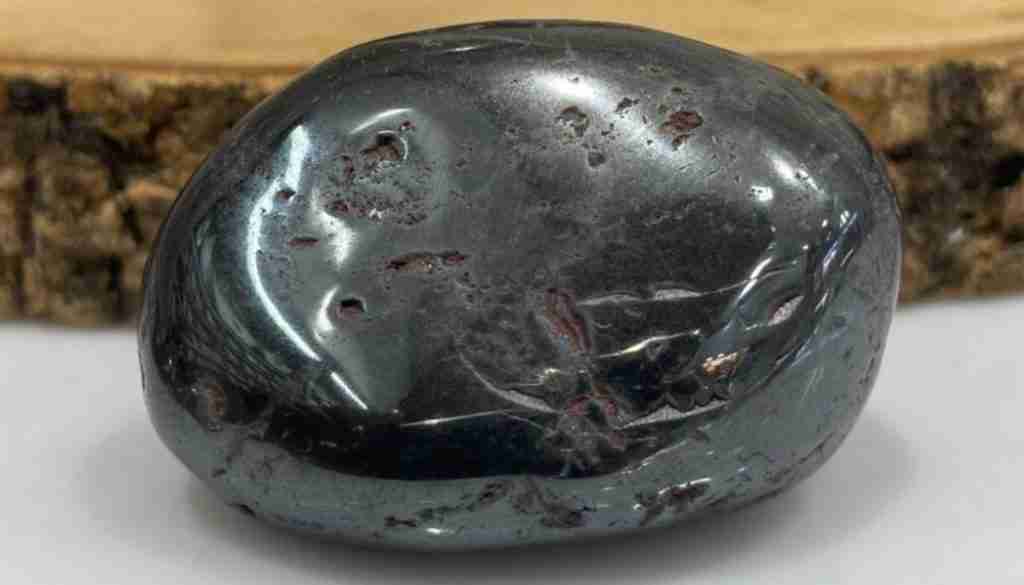Natural Crystals You Shouldn’t Put in Water

Protect the crystals from water. Depending on what material the natural crystals you have are made of, they may be harmed. Which crystals should we protect from water? Keep your crystals safe and learn which genuine crystals should not go into the water.
Whether you buy it from a natural stone store or a gift from a friend, you want to clear your crystal of past energies. So naturally, your first instinct may be to get it underwater. However, this action can do more harm than good for some natural crystals.
All natural crystals are made up of different minerals and materials. Therefore, some natural crystals can be cleaned and charged in water. However, for some, this is not the case. Our recommendation is sunlight for natural crystals that can be damaged in water. Some natural stones can be charged in the sun, but some can also fade or break in the sun. Thus, the method of discharge in the soil remains.
If you can’t find a landmass within your reach, you can recharge your natural crystal using a large bulk of hematite, carnelian, or citrine. Hematite, citrine, and carnelian are genuine crystals that can charge themselves and therefore do not contain negative energy. It will be sufficient to leave the crystal you want to recharge in contact with these crystals for a few hours.
If you are a crystal user, you should do energy cleansing regularly to continue to benefit from its beautiful energies. We have explained this information in detail in our article on how to use crystals. But which crystals should we protect from water?
Now you know that you shouldn’t put some of your crystals in water, but does this have anything to do with the hardness of your crystal? The short answer is yes.
What is the Mohs Scale, and What Range of Hardness Should Be Protected From Water?

One method of determining whether the crystal you are holding is safe to put in water is to understand where it is on the Mohs hardness scale—this scale rates crystals from 1 to 10. One is rated as the softest and ten as the hardest.
Which natural crystals should not go into the water? Answer: 1-5 on the Mohs scale.
Which genuine crystals can get into the water? Answer: 6-10 on the Mohs scale.
Why Shouldn’t Some Crystals Go into Water?

Because your crystal may be deformed by dissolving in water, its volume may decrease and dissolve in water. In general, the softer the material of a crystal, the more likely it is to dissolve or be damaged by water.
Some minerals are very soft. Many natural crystals that cannot be exposed to water are created from minerals that are too soft to hold the water element. As a result, their surfaces can break or warp when exposed to water.

The outer structure of some minerals is very porous. Most crystals are porous, meaning they have tiny holes on their surface to allow water to seep in. If it contains iron as a mineral, it can cause the crystal to rust or shatter when water seeps in.
Natural crystals such as hematite contain metals and can rust, discolor and disrupt the structural integrity of the crystal when exposed to water. In addition, as we said above, there is no need for energy cleaning of hematite. Due to its nature, it does not contain negative energy. You can even clean it energetically by leaving the crystals that you should not put into other water in contact with hematite overnight. But which crystals should we protect from water? Let’s look at some of the most popular natural crystals to keep out of water.
Which crystals should we protect from water?
Selenite
Selenite crystal; is usually made from gypsum. A soft sulfate mineral makes gypsum, chalk, drywall, and fertilizer. This crystal should not go into the water as it drops to 2 on the Mohs scale. However, there are very few natural crystals that are softer than selenite! Selenite’s minerals are too weak and porous to handle with water and can be quickly dissolved when mixed with liquids.

Fluorite

Fluorite is rated 4 on the MoH hardness scale. While it can handle short-term exposure to the water to be cleaned, continued exposure will affect its strength. The chemical structure of this crystal is made of “calcium fluoride.” Salt is Sodium fluoride, and when these two substances combine, it causes the deterioration of Fluorite. This chemical reaction makes this crystal unsafe, especially in salt water.

Sodalite

Sodalite ranks between 5 and 6 on the MoH hardness scale. This makes it a natural crystal that can be cleaned in water. The problem, however, is keeping the crystal in fresh or salt water for longer. This is because sodalite crystal contains cracks that can be difficult to see with the naked eye. But constant exposure can bring these cracks to the breaking point over time.

Lepidolite

The lepidolite crystal is between 2 and 3 on the hardness scale of MoH. Due to its softness, this crystal will flake off when exposed to water. Unfortunately, this beautiful crystal can also lose its shine as the brittle material breaks down in the water.
Angelite
Angelite ranks 3-4 on the Mohs hardness scale. This makes it a very soft crystal. When exposed to water, it can deform and break down. Keep this crystal on your ‘natural crystals that should not go into water’ list.

Apatite

Apatite drops to 5 on the Mohs hardness scale. This makes its exposure to water questionable. But more importantly, the cracks on its surface can cause breakage when exposed to water for a more extended period.

Malachite
Malachite ranks between 3 and 4 on Mohs’ hardness scale. It also contains copper, so it has the potential to rust when exposed to water. We recommend that you keep in mind that this crystal should not enter the water, as prolonged exposure when copper and water combine can cause toxic fumes to escape.

Labradorite
Labradorite drops to about 6 on the Mohs hardness scale. Although it is a complex natural crystal to scale, frequent and prolonged exposure to water can still cause damage.

Celestite

Celestite ranks in the 3-4 range on the MOHS hardness scale. This makes it a very soft crystal. As a result, it may decompose if left in water for a long time.
Pyrite

The pyrite crystal will produce sulfuric acid when combined with water. In addition, it is made of high iron content, meaning it can rust or discolor when in contact with water. Therefore, it is among the natural crystals that should not enter the water.

Calcite

Calcite is 3-4 on the scale and can take many forms. This crystal is ubiquitous and is the main component of limestone and marble. It may dissolve when exposed to water for a long time or frequently.

Hematite
Hematite ranks 5 to 6 on the hardness scale. However, due to its porous nature and metallic materials, it can rust when exposed to water.

Chrysocolla

Chrysocolla is a very delicate and soft natural crystal that falls within the 2-3 range on the MoH hardness scale. Therefore, it is prone to disintegrate and dissolve when placed in water.

Opal

Although it drops to 5-6 on the Mohs hardness scale, its internal structure may deteriorate if left in water. If you need to put the crystal in the water, we recommend holding it under warm running water. Opal is particularly sensitive to extreme liquid temperatures or salt water.

Jade Crystal
A jade crystal drops to 6-7 on the hardness scale. This makes it a crystal that is generally safe to clean under running water. However, it can be damaged by chlorine in the water. Therefore, we do not recommend keeping this crystal in water for long.

Be careful!

Whether purchased from a natural crystal store or received as a gift, genuine crystals are valuable and powerful healers you’ll want to hold on to for a long time. But unfortunately, some crystals may not last long if we do not care for them properly.
This article talked about natural crystals that should not go into the water. However, we recommend researching other genuine crystals to understand better the best way to clean your crystals and keep them in top condition.
If your crystal is included in the list of “crystals that should not go into the water,” do not worry. There are many other methods for natural crystal cleaning. If you want to learn how to clean your crystal in the most accurate way, you can click “Clean Your Crystals Most Accurately and Make the Most of Them“










